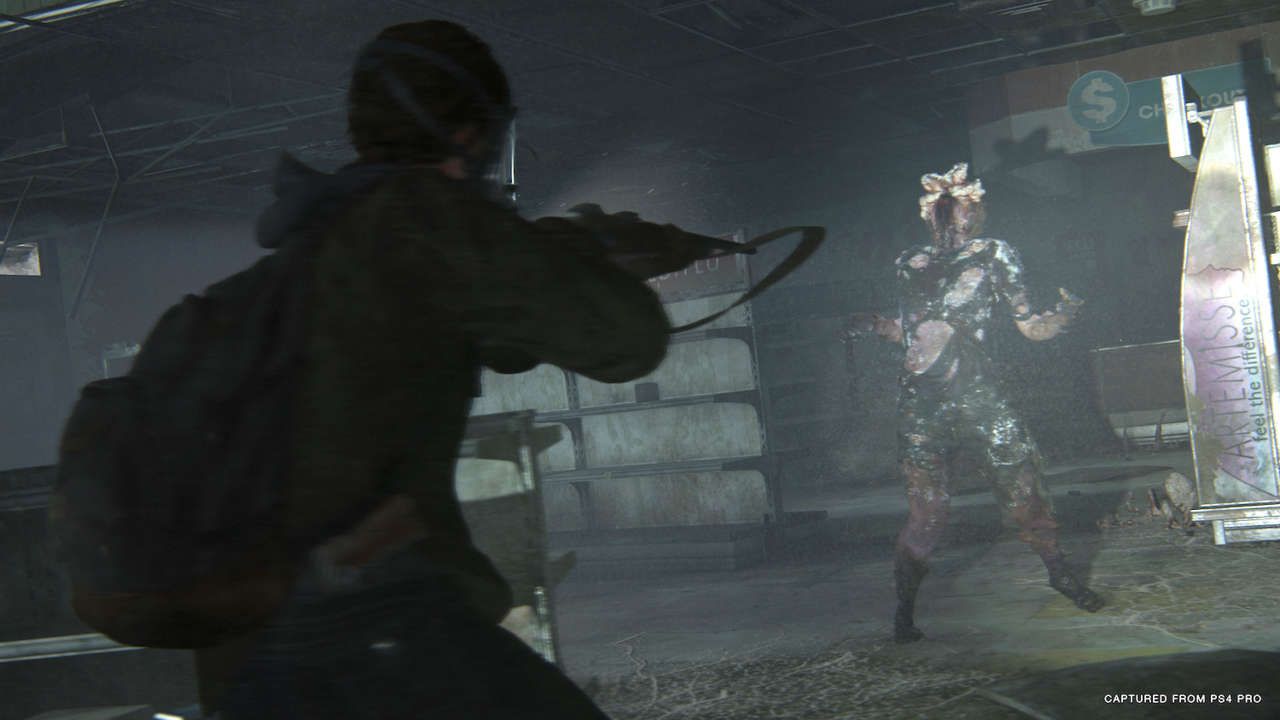The Last of Us and Resident Evil are two games which similarly invoke much curiosity among its fans as to the way in which society deals with infectious threats and how such infections manifest themselves in such environments. They each provide their own fictional takes in creating frightening creatures which share some similar characteristics but are worlds apart in the story of their manifestations.
Whereas Resident Evil's T-Virus can take over the host in a matter of hours on average and turn them into mindless and hungry zombies, the first stage of transforming a host via The Last of Us's Cordacyeps virus takes a few days. The latter also destroys the host's former identity in taking over the brain, but turns them into running threats rather than lolloping zombies. The Cordacyeps has more stages than the T-Virus' single transformation into a zombie, but it can take over a year at times for someone to surpass the first stage and transform to the next stage.
The second stage of the Cordacyeps virus is the Stalker stage, in which the brain is fully taken over by the fungus. They still have the mental aptitude of the first stage, and the ability to see as the fungus has not overtaken the eyes and vision yet. On the other hand, while the T-Virus' slow moving zombies rarely evolve in ways that allow the dead host to demonstrate the mental aptitude similar to a Cordacyeps Runner or Stalker, the later C-Virus in Resident Evil 6 or the Las Plagas parasites in Resident Evil 5 are perhaps closest.
The C-Virus, when injected into the host's bloodstream, allows for the maintenance of intelligence and even the use of weaponry. However, unlike the Cordacyeps fungus, those infected with the C-Virus remain conscious to a degree of their former self and identity and believe in the overall ideology or goals of the organization they belong to or the directives they have been given. In the case of Resident Evil 6, it is Neo-Umbrella's goal for world domination.
The Las Plagas parasites in Resident Evil 5 probably most resemble the first and second stage of the Cordacyeps fungus in The Last of Us, even more so than the Las Plagas parasites in Resident Evil 4. In Resident Evil 4, and similar to the C-Virus in Resident Evil 6, one has to willingly submit to the effects, transformation and goals of the Las Plagas parasite and a leader, and they likely remain partially conscious of their former selves.
In Resident Evil 5, the new Las Plagas parasites created by Tricell make it so that a host will unwillingly succumb to the directives of a particular lead host, suggesting they likely do not have any consciousness of their former selves. Besides being under the sway of a lead host, the Las Plagas parasites in Resident Evil 5 most closely resemble the most common type of enemies in the The Last of Us during their first and second stages.
The most infamous enemy in The Last of Us is perhaps the Clicker, which is the third stage of the Cordacyeps fungal infection. At this point, the fungal infection provides armor to its hosts, and their senses convert to sound waves in order to traverse their settings, rather than vision. Hosts can remain in this stage for a few years, and it might mean that The Last of Us 2 may have more of them, since more years have passed.
In Resident Evil's world of virology, there are few enemies that resemble the host of the Cordacyeps fungus at this third stage of infection, except those in Resident Evil: Revelations, which are infected with the T-Abyss virus. The T-Abyss virus was created by fusing the T-Virus with a new virus found in a deep sea fish, known as the Abyss virus, which allowed the fish to shield themselves from the water pressure at extreme depths.
Some humans infected with this T-Abyss virus in Resident Evil Revelations develop coral on their body, and also rely heavily on consuming fluids, which give them a layer of ooze which shields and protects them, and also makes their body particularly agile and flexible. They take far more shots to kill than a standard zombie. Also, while it is not confirmed, they display no eyes, suggesting they may navigate utilizing other senses than vision, similar to the third stage of the Cordacyeps. The fourth stage of hosts infected with the Cordacyeps fungus is the Bloater stage. At this stage, they are fully covered in fungal armor, and much like the third stage, uses sound and echolocation to navigate or hunt.
At this stage, the only enemies in Resident Evil which resemble these are particular bosses created by sub-strains with particular purposes, and often have some sort of biological shielding on their body making them similarly tough to kill. However, even Resident Evil's tougher enemies depend more on regenerative properties rather than strictly tougher shielding similar to the Bloater. For example, those infected with the G-Virus may demonstrate fragility to their organic matter, but also compensate by regenerating their biological mass. This is also the case with many of Resident Evil's bosses.
While there is no definite fifth stage of the Cordacyeps fungus, there is a new enemy known as the Shambler in The Last of Us 2. It appears to possibly be some alternate mutation similar to a Bloater. Overall, while both The Last of Us and Resident Evil have different enemy types, the former are diversified through a longer period of evolution that spans years. Resident Evil's enemy types are the result of totally different strains of man-made viruses, fungus or parasites, and take effect much more immediately, or within hours often times.
However, the breakdown of society in both the cases of The Last of Us and Resident Evil are often very similar, given that the first stage of the Cordacyeps fungus drives people mad and turns them into hostile threats to others. Given the quick timeframe of both the Cordacyeps fungus' first stage and the transformation of the T-Virus, the destruction of society can quickly transcend from a slow simmer to almost immediate chaos.
We will likely need to wait until Resident Evil 3 Remake's version of the Raccoon City incident to fully see how it succumbs to the T-Virus infection, but it would appear that Resident Evil's version of the breakdown of Raccoon City society is actually a slower simmer than in the The Last of Us, the latter of which transpired almost immediately without warning. While there is similarity between the first stage of the Cordacyeps fungus and the T-Virus transformations, it appears that the developers have two different viewpoints for the rate or speed at which society could possibly breakdown.
This may be because more people became infected with the airborne spores of the Cordacyep fungus simultaneously at once, with a large populace initially succumbing to the madness of the first stage around the same time. In the case of Resident Evil only a limited few initially became exposed to the T-Virus in Resident Evil's Raccoon City at the initial stage, which had to first spread under the chaos of a city under quarantine, trapping people within the confines of the T-Virus' slower spread and buildup which took a few days.
Other Resident Evil viruses, such as Resident Evil 6's C-Virus in its airborne mist form can immediately bring down chaos upon a city, but it also does not spread by biting others, making it a much more controllable menace. The different styles of of infection and the breakdown of society in Resident Evil and The Last of Us both provide hypothetical insights into what could become of human society if such infectious beings existed.
They provide different paradigms into similar cases of infectious events, with The Last of Us demonstrating a post-apocalyptic world in tatters as a result of something out of our control, whereas Resident Evil uses bio-weaponry instigated cases of man-made controlled chaos.
Resident Evil 3 is scheduled to release on April 3, 2020, for the PC, PlayStation 4, and Xbox One.





